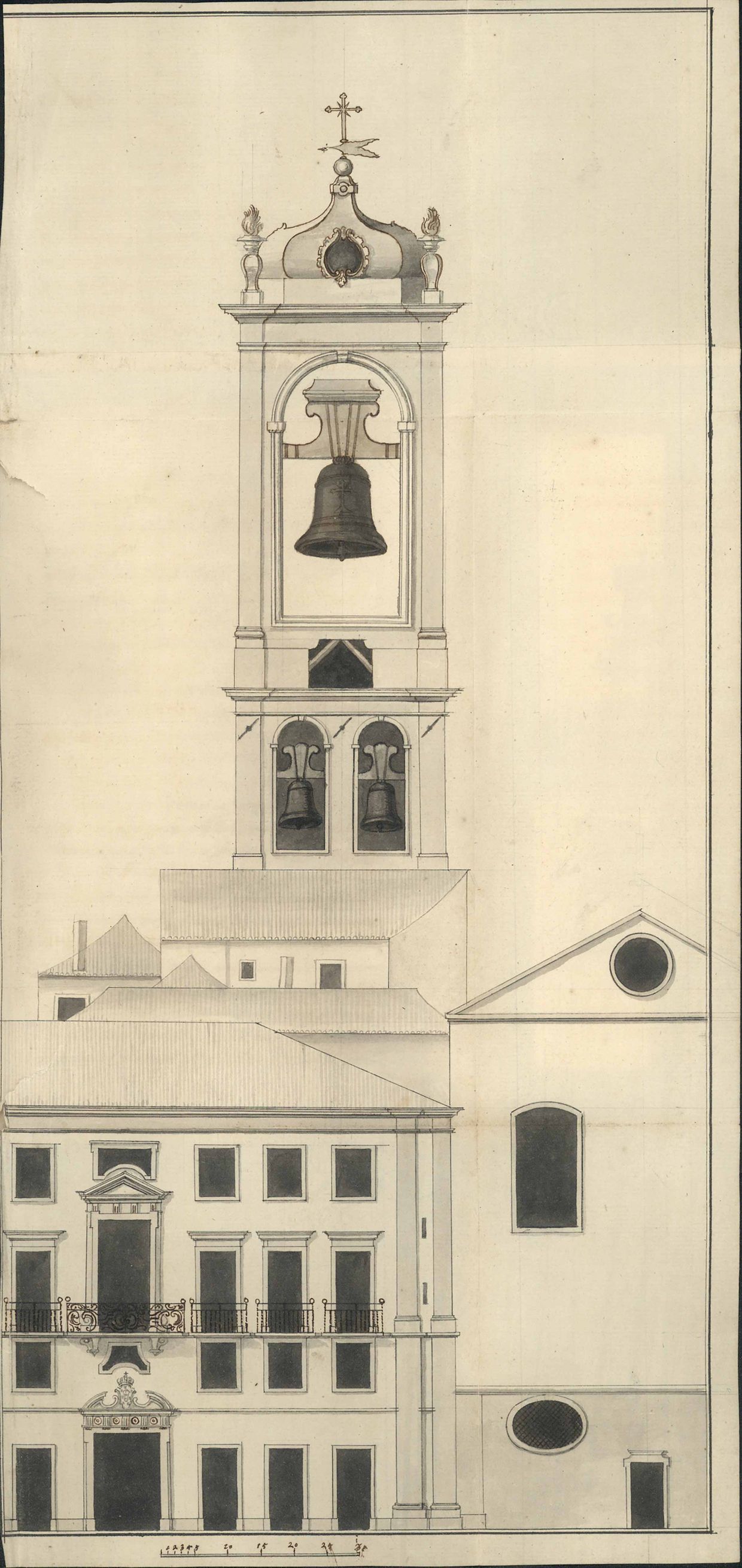As part of the ambitious project of King João V, the renovation of the old bell tower of the Royal Chapel and the clock tower of the Paço da Ribeira was undertaken. The task was entrusted to the Roman architect António Canevari (1681-1764), who served João V between 1727 and 1732. The commission for the new grandiose bells was awarded to a craftsman from the Netherlands, Nicolau Levache, whose foundry was established in Lisbon at Campo de Santa Clara.
In his work Mappa de Portugal antigo e moderno (Lisbon, 1763), the beneficiary of the Patriarch, João Baptista de Castro, describes the bell tower after king João V's investment: "He also had the tower of the Church adorned with many harmonious bells. It consisted of two bell floors: the first had two on each side, housing eight bells; on the second floor, there were four levels of bells; [...] The first bell weighs eight hundred arrobas [1 arroba = 15 kg] and rings on the feasts of the first class and during the obsequies of Royalties, Patriarchs, Cardinals, and Principals; the second weighs one hundred fifty-two arrobas;
it rings on the second-class feasts and tolls for titled Nobles, Monsignors, and Canons; the third weighs one hundred ten arrobas and tolls during the obsequies of the Beneficiaries; the fourth eighty-seven arrobas, ringing for the Chaplains; the fifth seventy-seven arrobas, tolling for the Sacristans; the sixth thirty-five arrobas; the seventh twenty-nine arrobas; the eighth twenty-five; the ninth twenty-two; and the charming one, two" (Volume III, p. 186).
After its fabrication, the largest bell (archisino) awaited placement in the tower for ten years, as additional construction was necessary to support its weight of 800 arrobas.
